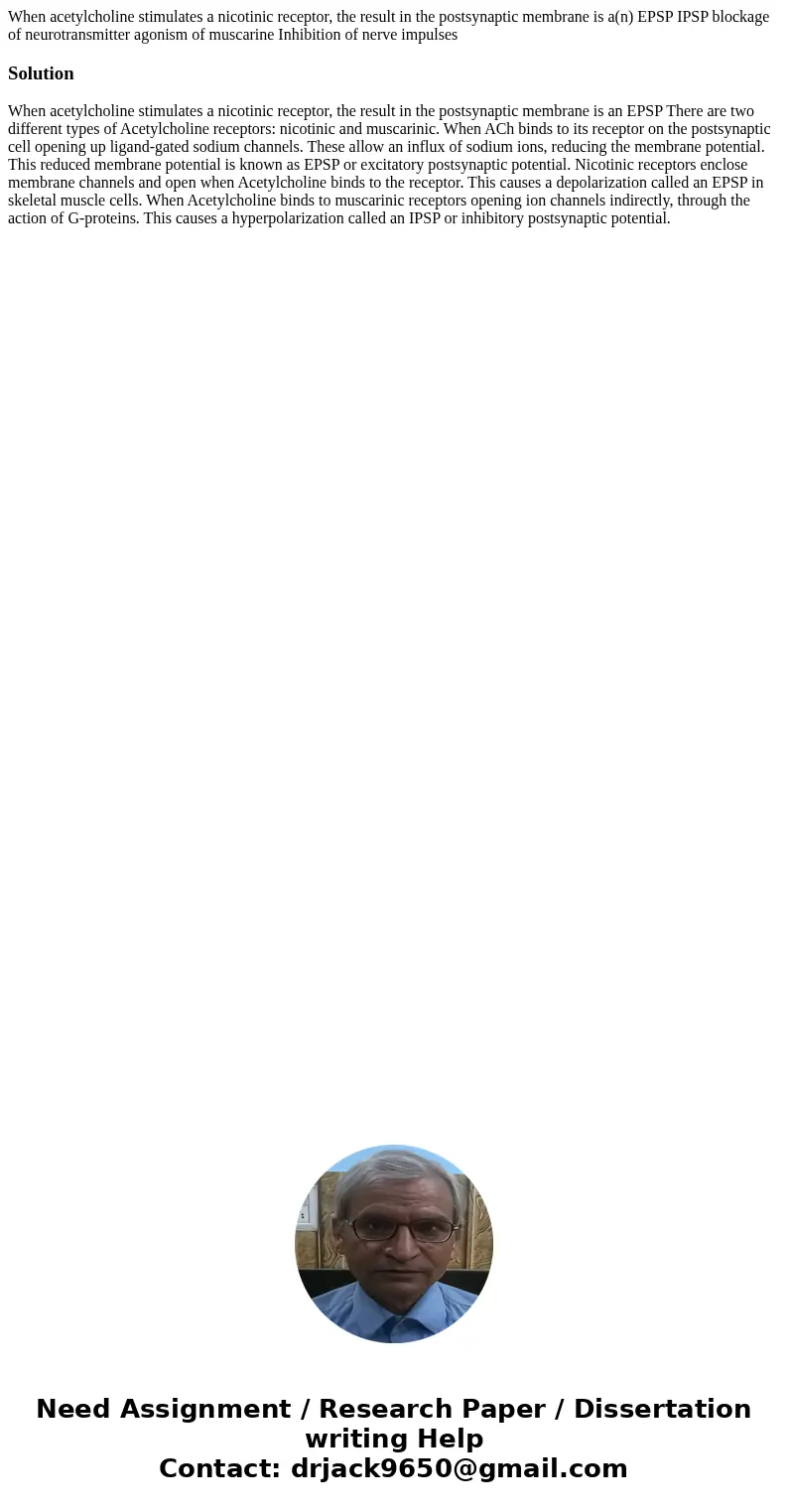When acetylcholine stimulates a nicotinic receptor the resul
When acetylcholine stimulates a nicotinic receptor, the result in the postsynaptic membrane is a(n) EPSP IPSP blockage of neurotransmitter agonism of muscarine Inhibition of nerve impulses
Solution
When acetylcholine stimulates a nicotinic receptor, the result in the postsynaptic membrane is an EPSP There are two different types of Acetylcholine receptors: nicotinic and muscarinic. When ACh binds to its receptor on the postsynaptic cell opening up ligand-gated sodium channels. These allow an influx of sodium ions, reducing the membrane potential. This reduced membrane potential is known as EPSP or excitatory postsynaptic potential. Nicotinic receptors enclose membrane channels and open when Acetylcholine binds to the receptor. This causes a depolarization called an EPSP in skeletal muscle cells. When Acetylcholine binds to muscarinic receptors opening ion channels indirectly, through the action of G-proteins. This causes a hyperpolarization called an IPSP or inhibitory postsynaptic potential.
 Homework Sourse
Homework Sourse